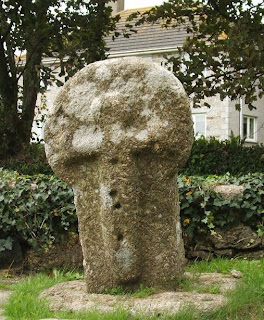


 Inside the church:-
Inside the church:-There is the blocked off doorway to the ancient rood-loft still outlined on the south wall. (The pulpit is Jacobean)
The piscina and alcove that used to hold the aumbrey remain in place on the south wall of the sanctuary.
There are the remains of ancient carvings in a corner near the north doorway.
As seen in the first photo there is a large moated site to the west of the church. This covers an area of some 2 hectares (4 1/2 acres). It is marked on O.S. maps as 'Site of Manor House'. There is no obvious 'Moot Hill' as at Guiting Power but the ancient church site and the dwelling of the 'Lord of the Manor' are ajacent. More telling is the fact that the church building is due east of the manor house site which could possibly date back to Anglo-Saxon times?? It would be interesting to know if any excavations have taken place here and what dates are given for the buildings.
































